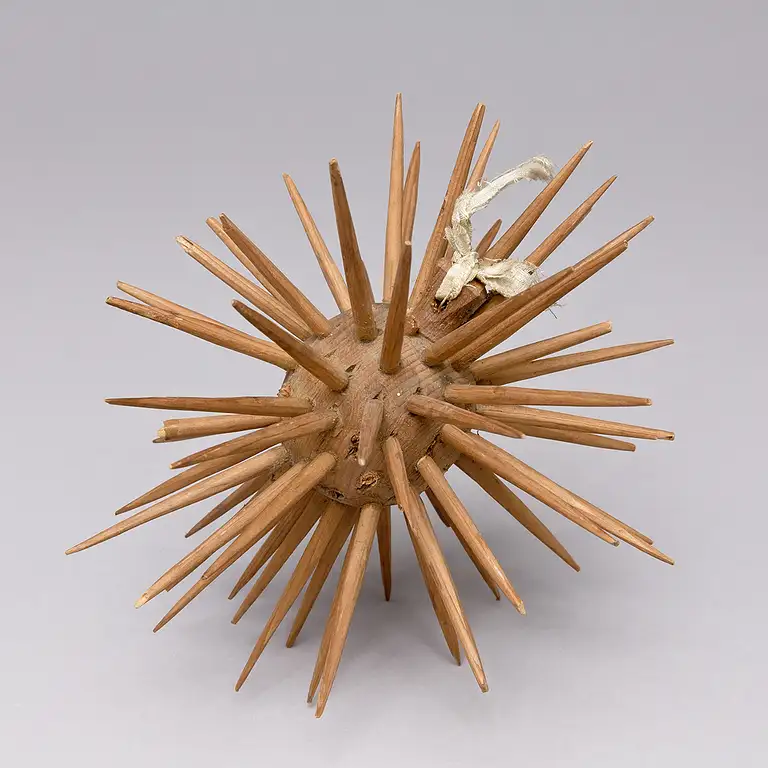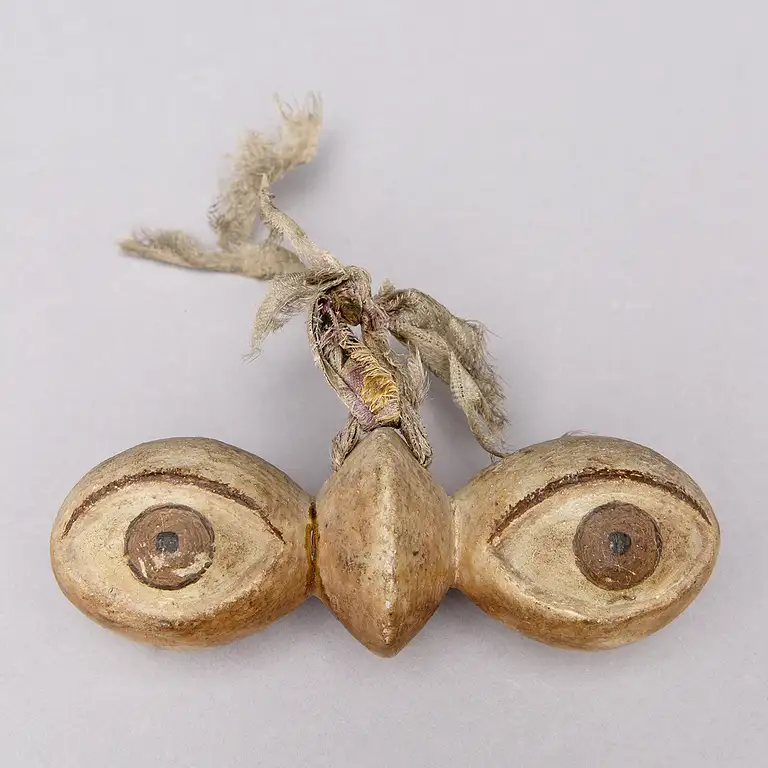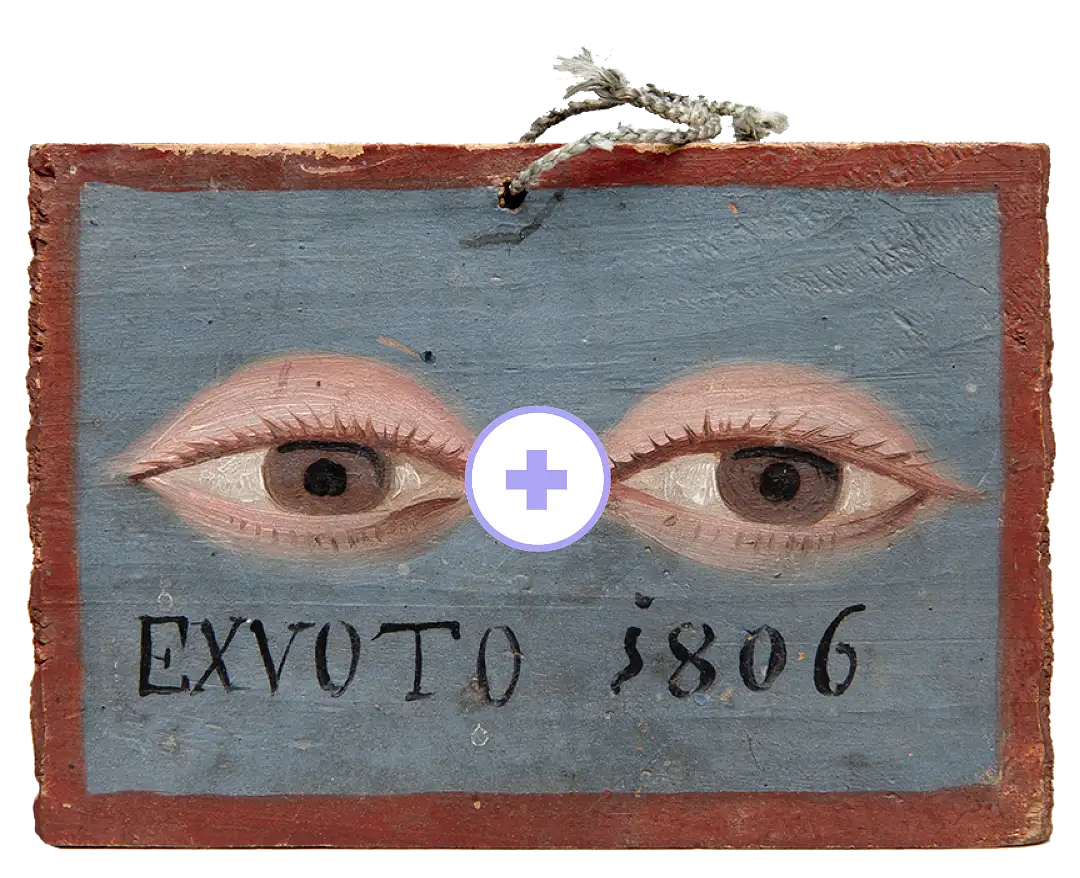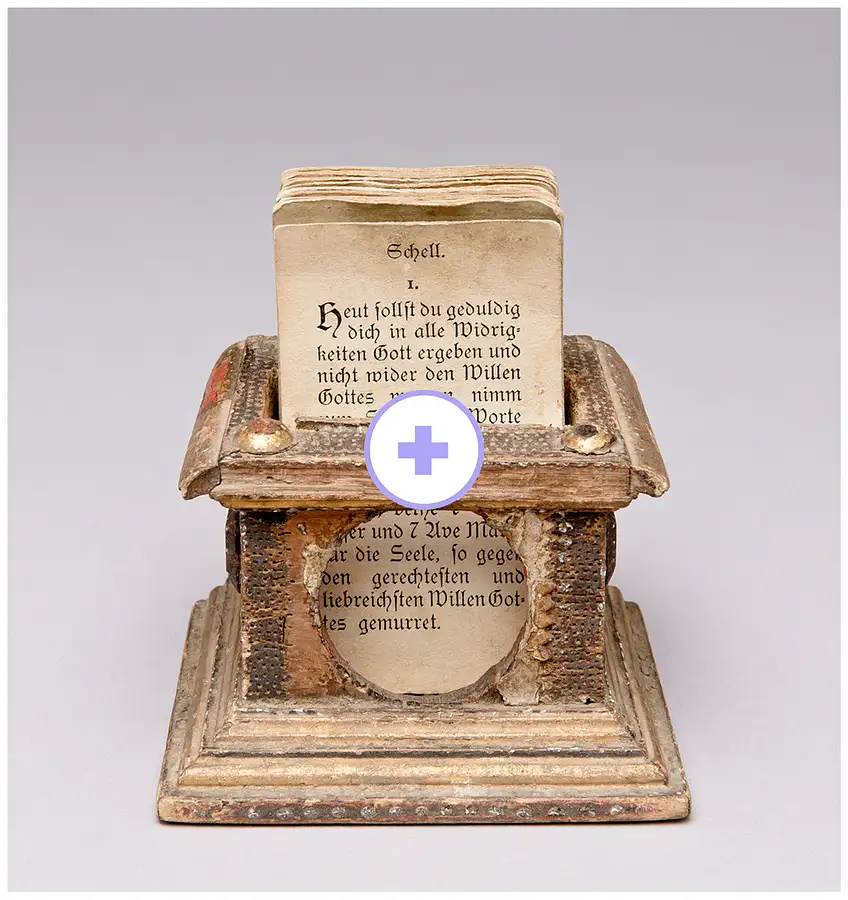Spiked Ball
From the late 19th century onwards, collectors in Tyrol went in search of interesting folkloristic objects
One of these objects, the spiked ball, supposedly represented a uterus. In pilgrimage chapels, such spiked balls are offered to Our Lady
Women who suffer from unexplained abdominal pain or an unfulfilled desire to have children have these spiked balls made to ask for heavenly help
The spiked ball served as a reference point for the emerging discipline "ethnology" to engage in the fervent discussion about the hot topic "hysteria"
-
Object data
- Event:
Date of production: Beginning of the 20th century
Acquisition by the museum: 1906 from Karl Wohlgemuth- Origin:
Europe/Italy/South Tyrol/Pustertal/Vintl
- Material:
Wood, metal, red paint
- Creator:
undocumented
- Size:
L 24 cm W 12 cm D 12 cm
- Inventory Id:
79:06
Intercession with the spiked ball
This wooden ball,
Since antiquity, scholars such as Hippocrates, Paracelsus, Galenos and Leonardo da Vinci have assumed that the uterus, if not regularly fed with male semen, would roam around the body, searching as far as the heart and brain, where it would cause pain by stinging or biting. From this, it was believed, came the "hysterical", the hypertensive and nervous behavior of women. The spikes on the ball personify this.


The spiked balls and other votive offerings, which in contrast to the uterus, are usually identifiable at first glance as human body parts (such as a heart, eyes or nose), migrated from the pilgrimage sites to local museums and became exhibition objects. Scholars studied them as "prehistoric" and "superstitious" among other things, and tourists were encouraged and expected to recognize them as "typical" of the particular region. At the same time,

Spotlight 1
Objects that say: “Thank you!” and “Please!” and represent hope and fear: Votive offerings

Spotlight 2

- Map teaser from "Fundorte der Votivgaben", see: Rudolf Kriss: Das Gebärmuttervotiv. Ein Beitrag zur Volkskunde nebst einer Einleitung über Arten und Bedeutung der deutschen Opfergebräuche der Gegenwart, Augsburg 1929
- Object images: © MARKK, photographs: Paul Schimweg
- References: Hamburg und Tirol. Eine Alpenfreundschaft? Exhibition catalogue, MARKK 2023; Elisabeth Timm: Die Ästhetik der Hysterie zwischen Ritual und Realie, ca. 1900. Kulturanthropologie und Wissensgeschichte einer Votivgabe, in: Anthropologie und Ästhetik, ed. by Britta Hermann, Paderborn 2018, p. 55-95, https://doi.org/10.30965/9783846759660_004; Elinor Cleghorn: Unwell Women: A Journey Through Medicine and Myth in a Man-Made World, London 2021; Richard Andree: Votive und Weihegaben des katholischen Volks in Süddeutschland. Ein Beitrag zur Volkskunde, Braunschweig 1904
Load 3D model
tell me to Spiked Ball
Would you like to submit a comment or other contribution regarding this story?
You can write to us and/or upload pictures, films or sound files. Here´s the form, just click on the button below and be part of tell me!
tell me